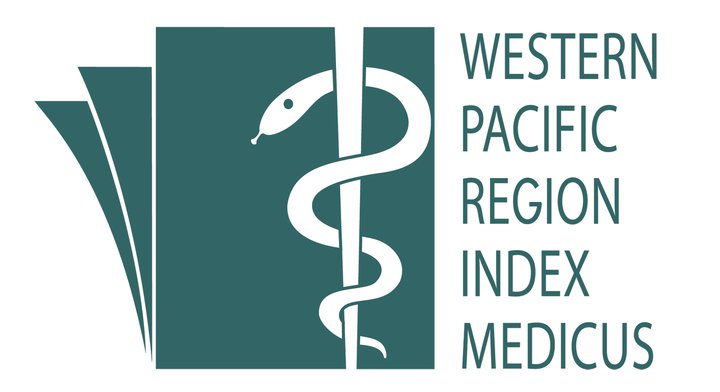Gender-specific Associations between Tobacco Use and Body Mass Index among School-going Adolescents in Malaysia: Results from the National Health Morbidity Survey 2017
Abstract
Introduction:
Tobacco uses and obesity are major global public health concerns, with adolescence being a critical period for the onset of these risk factors. In Malaysia, rising trends in adolescent smoking and obesity necessitate further investigation. This study examined gender-specific associations between different types of tobacco use and body mass index (BMI) among school-going adolescents.
Methods:
Data were derived from the NHMS 2017, a nationwide cross-sectional survey using a two-stage stratified random sampling design (N=27,497). Complex sample logistic regression was employed to assess the odds of past 30-day tobacco use by BMI category (underweight/normal weight, overweight, obese) stratified by gender. Confounders, including age, ethnicity, physical activity, fast food consumption, and mental health, were controlled for in the analysis.
Results:
Adolescents classified as obese had a significant association with tobacco use, but this was not observed in overweight individuals. Male smokers were significantly less likely to be obese, whereas female smokers had a higher likelihood of obesity (AOR = 1.59, 95% CI: 1.25–2.02). Specifically, female users of e-cigarettes (AOR = 1.86, 95% CI: 1.36–2.56), smokeless tobacco (AOR = 1.66, 95% CI: 1.14–2.43), and other tobacco products (AOR = 1.62, 95% CI: 1.05–2.52) exhibited a higher risk of obesity. No significant association was found among male smokers.
Conclusion:
Female adolescent smokers showed a greater likelihood of obesity, emphasizing the need for gender-specific interventions. To mitigate these risks, public health efforts should incorporate education, policy measures, and lifestyle promotion. Further research is warranted to explore underlying biological mechanisms.
References
Farhat T, Iannotti RJ, Simons-Morton B. Overweight, obesity, youth, and health-risk behaviors. Am J Prev Med. 2010;38(3):258-67.
Wang HM, Bell JF, Edwards TC, Patrick DL. Weight status, quality of life, and cigarette smoking among adolescents in Washington State. Qual Life Res. 2013;22:1577-87.
Institute for Public Health (IPH). National Health and Morbidity Survey 2015 Vol II: Non-communicable Disease, Risk Factors & Other Health Problem. Kuala Lumpur: Ministry of Health Malaysia; 2015.
Kasza KA, Ambrose BK, Conway KP, Borek N, Taylor K, Goniewicz ML, et al. Tobacco-product use by adults and youths in the United States in 2013 and 2014. N Engl J Med. 2017;376(4):342-53
Hopkinson NS, Lester-George A, Ormiston-Smith N, Cox A, Arnott D. Child uptake of smoking by area across the UK. Thorax. 2014;69(9):873-5.
Institute for Public Health (IPH). National Health and Morbidity Survey 2011 (NHMS 2011). Vol II: Non-Communicable Diseases. Kuala Lumpur: Ministry of Health Malaysia; 2011.
Zainol Abidin N, Zulkifli A, Zainal Abidin E, Syed Ismail SN, Abd Rahman A, Hashim Z, Semple S. Knowledge, attitude, and perception of second-hand smoke and factors promoting smoking in Malaysian adolescents. Int J Tuberc Lung Dis. 2014;18:856-61.
Potter BK, Pederson LL, Chan SSH, Aubut JA, Koval JJ. Does a relationship exist between body weight concerns and smoking among adolescents? An integration of the literature with an emphasis on gender. Nicotine Tob Res. 2003;6(3):397-425.
Colditz GA, Segal MR, Myers AH, Stampfer MJ, Willett W, Speizer FE. Weight change in relation to smoking cessation among women. J Smok Relat Disord. 1992;3:145-53.
Field AE, Camargo CA Jr, Taylor CB, Berkey CS, Roberts SB, Colditz GA. Peer, parent, and media influences on the development of weight concerns and frequent dieting among preadolescent and adolescent girls and boys. Pediatrics. 2001;107(1):54-60.
Akbartabartoori M, Lean MEJ, Hankey CR. Relationships between cigarette smoking, body size and body shape. Int J Obes (Lond). 2005;29:236-43.
Crisp A, Sedgwick P, Halek C, Joughin N, Humphrey H. Why may teenage girls persist in smoking? J Adolesc. 1999;22(6):657-72.
French SA, Perry CL, Leon GR, Fulkerson JA. Weight concerns, dieting behavior, and smoking initiation among adolescents: a prospective study. Am J Public Health. 1994;84(11):1818-23.
Charlton A, Blair V. Predicting the onset of smoking in boys and girls. Soc Sci Med. 1989;29(7):813-8.
Bennett BL, Pokhrel P. Weight concerns and use of cigarettes and e-cigarettes among young adults. Int J Environ Res Public Health. 2018;15(5):1084.
Saravanan C, Heidhy I. Psychological problems and psychosocial predictors of cigarette smoking behavior among undergraduate students in Malaysia. Asian Pac J Cancer Prev. 2014;15(18):7629-34.
Ministry of Health Malaysia.National Strategic Plan for Non-Communicable Diseases (NSP-NCD) 2016–2025.Putrajaya :Ministry of Health Malaysia ;2016. Accessed October 25,2024. https://www.moh.gov.my/moh/resources/Penerbitan/Rujukan/NCD/National_Strategic_Plan/National_Strategic_Plan_for_NCD_2016-2025.pdf
World Health Organization.Tobacco control in Malaysia : progress,and challenges. Geneva:WHO;2021.Accessed October 25, 2024.
https://www.who.int/publications/i/item/9789240032097
Awaluddin SM, Ibrahim Wong N, Rodzlan Hasani WS, Omar MA, Mohd Yusoff MF, et al. Methodology and representativeness of the adolescent health survey 2017 in Malaysia. Asia Pac J Public Health. 2019;31(1):1010539519854884.
World Health Organization. Growth reference data for 5–19 years. Geneva: WHO; 2007. Accessed October 25,2024. https://www.who.int/tools/growth-reference-data-for-5to19-years
Musa R, Fadzil MA, Zain Z. Translation, validation and psychometric properties of Bahasa Malaysia version of the Depression Anxiety and Stress Scales (DASS). ASEAN J Psychiatry. 2007;8:82-9.
Bursac Z, Gauss CH, Williams DK, Hosmer DW. Purposeful selection of variables in logistic regression. Source Code Biol Med. 2008 Dec 16;3:17. doi: 10.1186/1751-0473-3-17. PMID: 19087314; PMCID: PMC2633005.
Al-Sadat N, Misau AY, Zarihah Z, Su TT. Adolescent tobacco use and health in Southeast Asia. Asia Pac J Public Health. 2010;22(3):175S-805S.
Coogan PF, Adams M, Geller AC, Brooks DR, Miller DR, Lew RA, et al. Factors associated with smoking among children and adolescents in Connecticut. Am J Prev Med. 1998;15(1):17-24.
Lim KH, Sumarni MG, Kee CC, Amal NM, Norhamimah AB, Wan Rozita WM, Hanjeeet K. Susceptibility to smoking as a predictor of smoking initiation among adolescents - A longitudinal study in Kota Tinggi district, Malaysia. Med Health. 2011;6(1):49-58.
Lim K, Kee C, Sumarni M, et al. Do adolescents overestimate the prevalence of smoking among their peers? Findings from a study in Petaling District, Selangor, Malaysia. Med Health. 2011;11(2):6-12.
Wee LH, West R, Bulgiba A, Shahab L. Predictors of 3-month abstinence in smokers attending stop-smoking clinics in Malaysia. Nicotine Tob Res. 2011;13(2):151-6.
Wee LH, Shahab L, Bulgiba A, West R. Stop smoking clinics in Malaysia: Characteristics of attendees and predictors of success. Addict Behav. 2011;36(4):400-3.
French SA, Perry CL, Leon GR, Fulkerson JA. Changes in psychological variables and health behaviors by dieting status over a three-year period in a cohort of adolescent females. J Adolesc Health. 1995;16(6):438-47.
Hidayah NI, Hanafiah MS, Idris MN, Rosnah S, Ibrahim NMS, Nonnah CD. Risk behaviour amongst adolescents of a rural land development scheme in Peninsular Malaysia. J Kesihat Masy. 2003;9:12-6.
Norhayati MN, Zulkifli AI, Naing L, Rohana J, Jamil BYM. Smoking and body mass index among Malay adolescents in Kota Bharu, Kelantan. Malays J Public Health Med. 2006;6(1):44-50.
Jackson AA, Manan WA, Gani AS, Carter YH. Lay beliefs about smoking in Kelantan, Malaysia. Southeast Asian J Trop Med Public Health. 2004;35(3):756-63.
Jackson AA, Manan WA, Gani AS, Eldridge S, Carter YH. Beliefs and behavior of deceivers in a randomized, controlled trial of anti-smoking advice at a primary care clinic in Kelantan, Malaysia. Southeast Asian J Trop Med Public Health. 2004;35(3):748-55.
Fisher M, Schneider M, Pegler C, Napolitano B. Eating attitudes, health-risk behaviors, self-esteem, and anxiety among adolescent females in a suburban high school. J Adolesc Health. 1991;12(5):377-84.
Sohn H. Tobacco use and obesity among adolescents in Indonesia: The role of social norms and compensatory behaviors. Journal of Adolescent Health, 2015;56(3), 310-316.
Jitnarin N, Khaing M & Chaiyachati, K. The association between smoking and obesity among Thai adolescents: A cross-sectional study. BMC Public Health, 2014;14:1051.
Field AE, Austin SB, Frazier AL, Gillman MW, Camargo CA Jr, Colditz GA. Smoking, getting drunk, and engaging in bulimic behaviors: In which order are the behaviors adopted? J Am Acad Child Adolesc Psychiatry. 2002;41(8):846-53.
Australian Government Department of Health. Quit for Life program. Canberra: Australian Government; 2020. Accessed Feb 6, 2025. https://www.health.gov.au
Public Health England. Change4Life campaign. London: Public Health England; 2021. Accessed Feb 6, 2025. https://www.nhs.uk/change4life
Truth Initiative. Truth campaign. Washington, DC: Truth Initiative; 2021. Accessed Feb 6, 2025. https://www.truthinitiative.org
Puska P, Vartiainen E, Laatikainen T, Jousilahti P, Paavola M. The North Karelia Project: From North Karelia to national action. Helsinki: National Institute for Health and Welfare; 2009.
Center for Global Development. Thailand's campaign for tobacco control [Internet]. Washington, DC: Center for Global Development; 2020. Accessed Feb 6, 2025. https://millionssaved.cgdev.org/case-studies/thailands-campaign-for-tobacco-control
Health Promotion Board Singapore. I Quit program. Singapore: Health Promotion Board; 2021. Accessed Feb 6, 2025. https://www.hpb.gov.sg
Ministry of Health Malaysia. National Strategic Plan for the Control of Tobacco & Smoking Products 2021–2030. First edition. Putrajaya: Tobacco Control Sector and FCTC Secretariat, Disease Control Division, Ministry of Health Malaysia; 2021.
Story M, Nanney MS, Schwartz MB. Schools and obesity prevention: Creating school environments and policies to promote healthy eating and physical activity. Milbank Q. 2009;87(1):71-100.
French SA, Story M, Fulkerson JA, Gerlach AF. Food environment in secondary schools: À la carte, vending machines, and food policies and practices. Am J Public Health. 2003;93(7):1161-7.
Awan KH. Effects of tobacco use on oral health - an overview. Ann Dent Univ Malaya. 2011;18:18-23.
Zawahir S, Omar M, Awang R, et al. Effectiveness of antismoking media messages and education among adolescents in Malaysia and Thailand: Findings from the international tobacco control southeast Asia project. Nicotine Tob Res. 2013;15(2):482-91.
Al-Naggar AR, Osman MT. Public attitudes towards smoking bans in non-airconditioned restaurants in Malaysia. Indian J Appl Res. 2013;7:524-6.
Al-Naggar RA, Kadir SYA. Lung cancer knowledge among secondary school male teachers in Kudat, Sabah, Malaysia. Asian Pac J Cancer Prev. 2013;14:103-9
Potter BK, Pederson LL, Chan SSH, Aubut JL, Koval JJ. Does a relationship exist between body weight, concerns about weight, and smoking among adolescents? Nicotine Tob Res. 2004;6(3):397-425.
Majid AB, Johari LH, Nasir AM, Anselm ST, Chan WH, Rahman NA, Ibrahim N, Nirmal BP, Omar NM. Religious beliefs in relation to smoking: A cross-sectional study among Muslim males in the month of Ramadan. Malays J Public Health Med. 2002;2(2):32-5.
Wee LH, Ithnin AA, West R, Mohamad N, Chan CMH, Hasan Nudin SS. Rationalizations and identity conflict following smoking relapse: A thematic analysis. J Subst Use. 2016;21(6):1-6.
Tohid H, Ishak NM, Muhammad NA, Ahmad FNM, Aziz AEA, Omar K. Perceived effects of the Malaysian national tobacco control programme on adolescent smoking cessation: A qualitative study. Malays J Med Sci. 2012;19(4):35-47.
French SA, Perry CL. Smoking among adolescent girls: Prevalence and etiology. J Am Med Womens Assoc. 1996;51(1-2):25-8.
Guindon GE, Driezen P, Chaloupka FJ, Fong GT. Cigarette tax avoidance and evasion: findings from the International Tobacco Control Policy Evaluation (ITC) Project. Tob Control. 2014;23 Suppl 1
Robson N, Mohammad H. Is there a need for a hospital-based smoking cessation programme in Malaysia? MJP Online. 2008:1-4.
Bibiloni MdM, Pons A, Tur JA. Prevalence of overweight and obesity in adolescents: A systematic review. ISRN Obes. 2013.
Breslau N, Peterson EL. Smoking cessation in young adults: age at initiation of cigarette smoking and other suspected influences. Am J Public Health. 1996;86(2):214-20.
Ganasegeran K, Rashid A. Clearing the clouds—Malaysia’s vape epidemic. Lancet Respir Med. 2016;4:854-6.
Institute for Public Health (IPH). The third National Health and Morbidity Survey (NHMS III) 2006: Nutritional Status. Ministry of Health, Malaysia; 2008.
Institute for Public Health (IPH). Report of the Global Adult Tobacco Survey (GATS) Malaysia. Kuala Lumpur: Ministry of Health Malaysia; 2011.
Institute for Public Health (IPH). Tobacco & E-Cigarette Survey Among Malaysian Adolescents (TECMA). Kuala Lumpur: Ministry of Health Malaysia; 2016.
Janesick A, Blumberg B. Adipocytes as target cells for endocrine disruption. Endocrine Disruptors and Puberty. 2012;255-71.
Klesges RC, Zbikowski SM, Lando HA, Haddock CK, Talcott GW, Robinson LA. The relationship between smoking and body weight in a population of young military personnel. Health Psychol. 1998;17(5):454-8.
Kyrlesi A, Soteriades ES, Warren CW, Kremastinou J, Papastergiou P, Jones NR, et al. Tobacco use among students aged 13–15 years in Greece: the GYTS project. BMC Public Health. 2007;7(1):3-11.
Jacobs M. Adolescent smoking: The relationship between cigarette consumption and BMI. Addict Behav Rep. 2019;(9):100153.
Neumark-Sztainer D, Story M, French SA, Hannan PJ, Resnick MD, Blum RW. Psychosocial concerns and health-compromising behaviors among overweight and nonoverweight adolescents. Obes Res. 1997;5(3):237-49.
Pasch KE, Velazquez CE, Cance JD, Moe SG, Lytle LA. Youth substance use and body composition: Does risk in one area predict risk in the other? J Youth Adolesc. 2012;41(1):14-26.
Downloads
Published
How to Cite
Issue
Section
License
Copyright (c) 2025 Zamtira Seman, Jayvikramjit Singh MS, Ridwan Sanaudi, Nor Hazimah Yeop Abd Rashid, Mohd Azahadi Omar

This work is licensed under a Creative Commons Attribution-NonCommercial 4.0 International License.
IJPHR applies the Creative Commons Attribution (CC BY) license to articles and other works we publish. If you submit your paper for publication by IJPHR, you agree to have the CC BY license applied to your work. Under this Open Access license, you as the author agree that anyone can reuse your article in whole or part for any purpose, for free, even for commercial purposes. Anyone may copy, distribute, or reuse the content as long as the author and original source are properly cited. This facilitates freedom in re-use and also ensures that IJPHR content can be mined without barriers for the needs of research.






